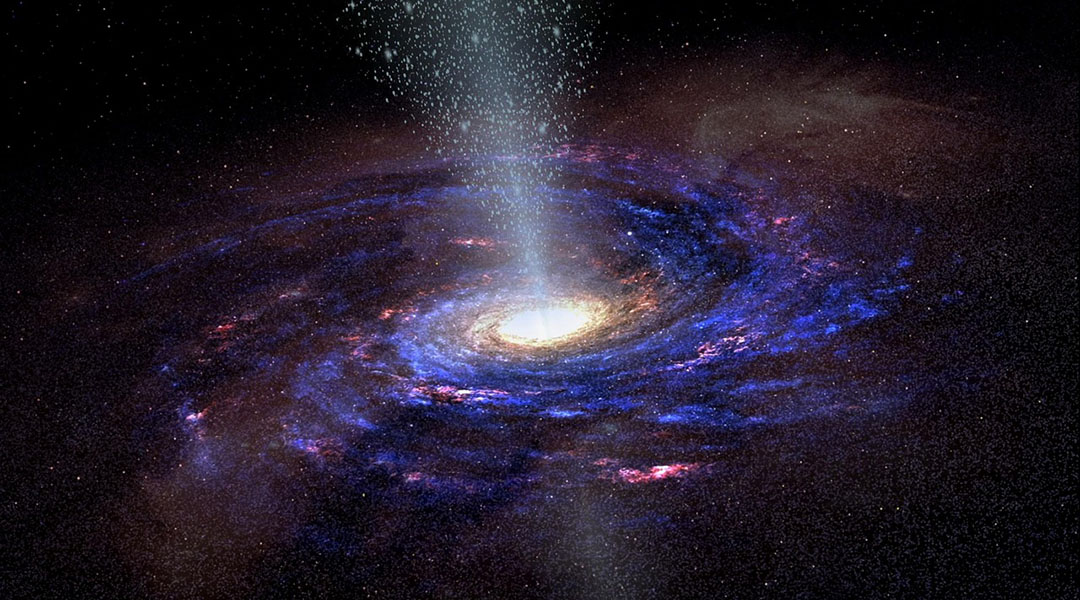Scientists may have found an explanation for a mysterious form of radiation coming from the heart of the Milky Way. A research team has proposed that this signal, which originates in the Central Molecular Zone — a dense region of gas and dust surrounding the galactic core — could be the result of interactions involving a previously often overlooked type of dark matter.
Their model not only explains this unusual emission but also sheds light on another long-standing cosmic puzzle: the source of the 511-kiloelectronvolt (keV) emission line, a distinct gamma-ray signal whose origin has remained elusive for decades.
“At the center of our galaxy sit huge clouds of positively charged hydrogen, a mystery to scientists for decades because normally the gas is neutral,” Shyam Balaji, postdoctoral research fellow at King’s College London and one of the authors of the study, explained in a press release. “So, what is supplying enough energy to knock the negatively charged electrons out of them?
“The energy signatures radiating from this part of our galaxy suggest that there is a constant, roiling source of energy doing just that, and our data says it might come from a much lighter form of dark matter than current models consider.”
A different approach to dark matter
Dark matter, which constitutes about 85% of all matter in the universe, is invisible because it neither emits nor interacts with light, and its existence has been discovered through its gravitational influence on the motion of stars within galaxies. For decades, researchers have theorized that dark matter consists of heavy particles known as weakly interacting massive particles, or WIMPs, which are orders of magnitude heavier than protons.
However, a recent study published in Physical Review Letters challenges this assumption. The researchers instead explore the possibility that dark matter is composed of much lighter particles, with masses roughly ten times smaller than that of a proton
Their calculations show that if dark matter is this light, its particles could efficiently annihilate each other, producing electron-positron pairs. The resulting positrons — antimatter counterparts of electrons — would then interact with the surrounding hydrogen gas, leading to ionization. This process would explain the presence of highly ionized hydrogen in the Central Molecular Zone.
“The search for dark matter is one of fundamental science’s most important objectives, but a lot of experiments are based on Earth, waiting with hands outstretched for the dark matter to come to them,” said Balaji. “By peering into the center of our Milky Way, the hydrogen gas in the Central Molecular Zone is suggesting that we may be closer to identifying evidence of the possible nature of dark matter.”
Shedding light on the 511 keV emission
Beyond explaining the ionized hydrogen, the team’s model also provides a potential explanation for the mysterious 511 keV emission line. This gamma-ray signal, first detected decades ago, originates from a much broader region of the galaxy than the Central Molecular Zone. It is widely believed to result from the annihilation of positrons and electrons, but the source of these positrons has remained unknown.
According to the researchers, the same dark matter annihilation process responsible for ionizing hydrogen could also be producing these positrons. As the electron-positron pairs lose energy through interactions with interstellar gas, they could form positronium — a short-lived bound state of an electron and a positron, similar to a hydrogen atom but with a positron in place of the proton. When positronium decays, it emits two gamma-ray photons, each with an energy of 511 keV, matching the observed signal.
The challenge of observing the 511 keV signal
The spectrometer on INTEGRAL, the spacecraft used to study the 511 keV emission line, has an angular resolution of 2.5 degrees. As a result, it has been difficult to pinpoint the exact source of the emission or compare it with the distribution of ionized hydrogen in the Central Molecular Zone.
Even the next-generation Compton Spectrometer and Imager, an upcoming space mission designed to study gamma-ray sources, is expected to have a similar angular resolution. While it will provide a wider field of view and improved sensitivity, it will not be able to map the 511 keV emission in fine detail.
However, multiple mission concepts currently in development aim to overcome this limitation. Instruments such as 511-CAM, MARGIE, and GECCO are designed to achieve sub-arcminute resolution — about 1/60 of a degree — allowing for far more precise localization of gamma-ray sources. If deployed, these missions could map the spatial structure of the 511 keV emission in unprecedented detail, providing a critical test of the researchers’ hypothesis.
By identifying the exact regions where these signals originate, future observations could confirm whether light dark matter particles are responsible for both the ionized hydrogen in the Central Molecular Zone and the 511 keV emission. If so, it would be a major breakthrough in the search for dark matter, offering a completely new way to study this enigmatic substance that dominates the universe yet has remained hidden from direct detection.
Reference: Pedro De la Torre Luque, Shyam Balaji, and Joseph Silk, Anomalous Ionization in the Central Molecular Zone by Sub-GeV Dark Matter, Physical Review Letters (2025). DOI: 10.1103/PhysRevLett.134.101001
Feature image credit: Placidplace on Pixabay

















